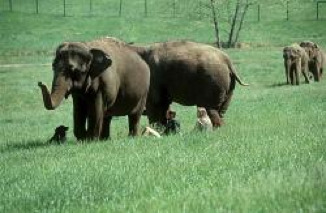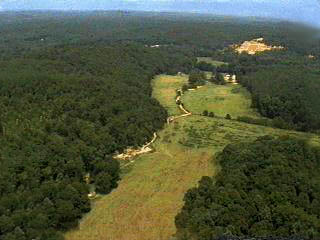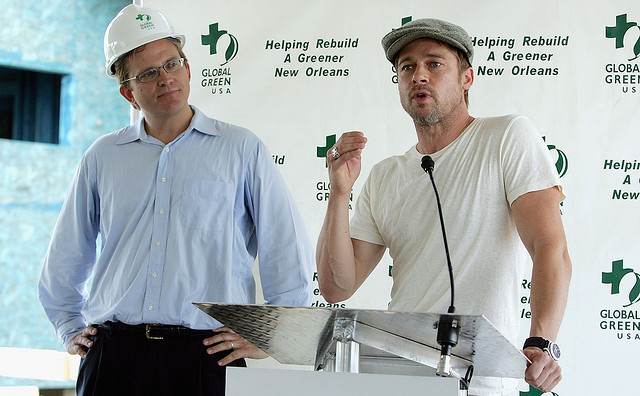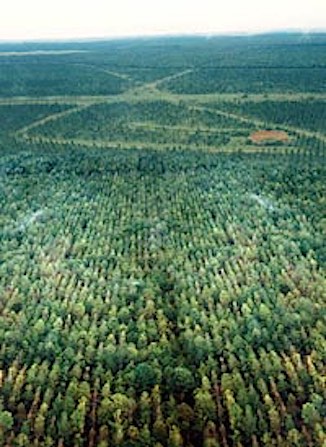Russian president
UPDATE: I read on May 1 that the lake is the world’s oldest and deepest, containing 20 percent of Earth’s surface fresh water (25 million years old and 1,700 metres deep).
Russian president
UPDATE: I read on May 1 that the lake is the world’s oldest and deepest, containing 20 percent of Earth’s surface fresh water (25 million years old and 1,700 metres deep).
Maoist rebels in Nepal declared a unilateral three-month cease-fire in response to recent democratic moves by the king to reinstate parliament. A statement by the group said offensive military action will cease beginning April 27, respecting “the aspiration for the constituent assembly, a democratic republic, and peace that is seen on the street.” The Maoist insurgency to overthrow the monarchy began in 1996 and cost the lives of at least 13,000 people. (more at nyt.com)
A new therapeutic approach to treating obesity uses a naturally occurring hormone. The best news is that the chemical comes from our own bodies, so there would be no nasty side effects, and from reading this report it looks like it really works:
The book, The Wisdom Paradox: How Your Mind Can Grow Stronger As Your Brain Grows Older, by Dr. Elkhonon Goldberg, inspired several optimistic articles about aging, beginning with this item on the excellent Web site, Lime.com:
Ed Graney in the San Diego Union tells the story of redemption for an ex-jock who leaves his life of binge drinking — get this — and also leaves his life as a well-paid star in television sportscasting to go for a high that comes from helping others… But Aaron Taylor’s story is relevant because his philosophy is sound no matter what your life story. He says, “It was all necessary to get where I am, which is exactly where I need to be.”
He wouldn’t change a thing now, not one hangover or failed relationship or the fights only a fierce temper and alcohol produce. Not the pain. Not the tears. Not one moment of a destructive cycle that allowed him to make what has been a life-altering exchange: Booze for benevolence.

Elephants are majestic creatures who are highly intelligent, complex, social, sensitive and even humorous. They form intricate family structures and grieve for their dead. In the wild, elephants are migratory, walking 30 to 50 miles each day — a disturbing fact for elephants faced with life in a zoo.
Carol Buckley worked in tandem with elephants for twenty years in television, motion pictures and circus shows until, in 1995, she began to fulfill the migratory dream for elephants restrained by captivity. She founded the Elephant Sanctuary in Hohenwald, Tennessee, a 2700-acre reserve that is now home to more than 20 Asian and African elephants rescued or retired from zoos and circuses.
Good News Network member Janet Locke suggested we needed to write about this organization and its residents, who are not paraded before the public — even in a humane way; instead, “they are encouraged to live like elephants.”
Those eight elephants now have complete freedom to roam over hundreds of acres of the wonderful sanctuary habitat. They are given free-choice access to come into a heated barn at night or sleep outside under the stars. By day they swim in the sanctuary’s creeks and ponds, explore the subtropical forests, graze in meadows, scratch their backs on trees and nap in soft grass, all for the first time in their lives. It is enthralling to witness the elephants enjoying their freedom at this sanctuary.
 To care for the eight newest refugees to the Elephant Sanctuary, the organization will need antibiotics for a yearlong course of treatment for tuberculosis, estimated to cost $200,000, along with the standard expenses of regular medical care; hundreds of pounds of fruits, vegetables and grain daily; eight semi-trailer loads of hay annually; and trained caregivers. The cost to care for these eight elephants for one year is estimated to be $2 million.
To care for the eight newest refugees to the Elephant Sanctuary, the organization will need antibiotics for a yearlong course of treatment for tuberculosis, estimated to cost $200,000, along with the standard expenses of regular medical care; hundreds of pounds of fruits, vegetables and grain daily; eight semi-trailer loads of hay annually; and trained caregivers. The cost to care for these eight elephants for one year is estimated to be $2 million.
Visit elephants.com to see how you can help.
(With writing from Janet Locke)
The BBC reports on the people’s victory in Nepal. Very exciting photo and story:
 Is the Media Unbalanced? One Network Asserts Public Health is Served by its Positive News Tilt, Readers Attest to Medicinal Effects
Is the Media Unbalanced? One Network Asserts Public Health is Served by its Positive News Tilt, Readers Attest to Medicinal Effects
Visit the Good News Network website and you’ll find global success stories from the worlds of government, science, and society. Instead of balance, you’ll hear just one side – the positive side. The newly launched website boasts that viewers actually accrue health benefits while reading its menu of positive news. According to letters written by visitors to the site, the Good News Network relieved depression and anxiety symptoms brought on by the overdose of depressing news that saturates the Media.
The value of the site also has impressed leaders in the fields of psychology and politics.
Tal Ben-Shahar is a lecturer at Harvard University whose positive psychology course is the most popular class on campus with 850 students enrolled. He believes the Good News Network can benefit everyone. “It’s an extremely important initiative. I recommend that each person makes it a habit to visit the website at least once a day — to counter the barrage of negativity in the media. Being exposed to positive information benefits us emotionally, physically, and mentally. It can contribute in a meaningful way to a happier and healthier life.”
Former Secretary of State Colin Powell wrote to the Good News Network, “I enjoyed reading the positive stories… (and) am heartened by the goodness and generosity that I see. Keep up your good work.”
The barrage of negativity to which Ben-Shahar referred is steadily intensifying: Despite the fact that the U.S. homicide rate dropped in the 1990’s by 42%, television news coverage of murders skyrocketed up 721% (Center for Media and Public Affairs). During that time, TV network news audiences and newspaper circulation continued to fall, which may be related to the mad increase in crime coverage.
More and more people are looking for news on the internet. With her newly redesigned site, and regular content updates, Good News Network publisher, Geri Weis-Corbley, hopes to make daily readers of the 10,000 people who search every month for ‘good news’ on internet search engines.
Weis-Corbley is a pioneer in the positive news arena founding the Good News Network nine years ago as the first website to offer original and compelling positive news programming. She says that with the advent of new technologies today like RSS and software for content management and blogging, it is much easier for a small company to publish and link to news content from around the world on a daily basis. “Now it is possible for the Good News Network to amass a large and loyal audience that could rival traditional news networks online. The bonus for our readers is that our content benefits their health and well being. For those suffering from the depression that permeates so much of society, instead of popping a pill, we suggest A Daily Dose of News to Enthuse.”
Weis-Corbley calls on people around the world to download a free copy of the September 11 Commemorative Edition newsletter entitled, “Some Good News!” It is a testament to the power of positive thinking in the midst of tragedy and a reminder of how good it feels to be reading encouraging news.
For additional information on the Good News Network, contact Geri Weis-Corbley or visit the Good News Network online.
The Good News Network is a media company based in Northern Virginia that has published an online website of positive news and inspiration since 1997 at www.goodnewsnetwork.org.
Contact us: 1 (866) Good News (466-3639)
www.goodnewsnetwork.org
###
Crime in London has decreased to its lowest level in five years, according to new police figures published last week. The number of homicides fell by 10% to its lowest level since 1998, and the total number of crimes in the capital fell by more than 3% in the 12 months ending in March. Racist, homophobic and domestic crime were also down, the Metropolitan Police statistics showed.
CTV reports on Bioengineers at the University of Calgary who have successfully grown insulin-producing cells in a lab, which they say marks a major breakthrough in diabetes research.
The team of scientists hope to eventually transplant lab-grown, insulin-producing cells directly into the bodies of patients with Type 1 diabetes.
.jpg) EARTH DAY SPECIAL — An estimated 196 million to 230 million computers are in use in the United States today, each designed to last more than a decade. Yet technology is advancing so rapidly that users often replace their computers just three or four years after buying them. Often people either store or throw out their old computers, not realizing how their equipment could benefit others. If we refurbish just 10% of these PCs, we could provide more than 3 1/2 million computers for schools and low income families and eliminate the digital divide by the end of the decade. The other problem is that throwing out computers and electronics is a waste of valuable materials that could be used to make new products. Learn how you can help. . . .
EARTH DAY SPECIAL — An estimated 196 million to 230 million computers are in use in the United States today, each designed to last more than a decade. Yet technology is advancing so rapidly that users often replace their computers just three or four years after buying them. Often people either store or throw out their old computers, not realizing how their equipment could benefit others. If we refurbish just 10% of these PCs, we could provide more than 3 1/2 million computers for schools and low income families and eliminate the digital divide by the end of the decade. The other problem is that throwing out computers and electronics is a waste of valuable materials that could be used to make new products. Learn how you can help. . . .
Earth Day Special — The 21st annual Great American Cleanup is in full swing, mobilizing millions of volunteers to clean, beautify and improve their communities each spring. Last year 2.4 million volunteers collected a record breaking 208 million pounds of litter and debris; recycled hundreds of tons of material; planted 4.2 million flowers; cleaned 176 miles of roads; and cleaned 10,250 miles of waterways and shorelines.
On March 2, more than 750 volunteers from all over the country descended on Biloxi, Miss., for the official kickoff to the 2006 national campaign, launching a full day of Hurricane Katrina Restoration activites. Volunteers removed mounds of storm debris and also planted grass, flowers and oak trees to aid in coastal restoration. From the Biloxi Town Green to the Purple Heart Memorial and Edgewater Mall beach, one main objective was achieved; to make a visible difference in this community in one day.
It’s not too late to volunteer for the Great America Cleanup! It runs until May 31. Consult this page for a list of U.S. states and territories, and even other countries (Canada and South Africa) that are participating.
A new study from UCLA reports California has saved about $800 million over the last five years by sentencing non-violent drug offenders to community-based drug treatment programs rather than prison.
When Californians passed by referendum proposition 36, which gave non-violent drug offenders a chance to enter drug rehab rather than serve jail time, many thought it would lead to a crime wave, including the Contra Costa Times editorial staff. Today they are encouraged by the numbers and are urging the Legislature to re-fund Prop. 36 before it expires this year. The Good News Network agrees with their reasoning:

Brad Pitt and Global Green USA announced the Sustainable Design Competition for New Orleans Neighborhoods.
“Get ready to create implementable visions for reconstruction of a New Orleans neighborhood. Be sure to use green affordable housing, plan for sustainability and don’t forget the community center. Six finalists will work with local neighborhoods on details.”
Pitt spoke as the sponsor and chairman for the design jury. He said the competition asks the question, ‘Can this catastrophe be turned into an opportunity? Can we create for these neighborhoods and its families something even better than they had before?’ “It is our hope that this competition will generate and uncover new and innovative ideas which will spark a long overdue rebuilding effort for the people of New Orleans.”
The project aims to reduce energy bills for low-income families, help communities rebuild with clean jobs, and reduce the threats to public health with green building.
Finalist presentations and jury review will occur prior to August 29, 2006, the one-year anniversary of Katrina’s landfall. Six local neighborhoods- those needing the most assistance and having active neighborhood groups- will be invited to participate in the finalist round of competition. Using culturally, environmentally and climactically appropriate designs, materials and strategies, the final designs will follow these principles.
To receive information via email when the competition program is finalized in mid-May register at Global Green USA.
 EARTH DAY SPECIAL — TAKE ACTION — Check out these two great Earth Day ideas brought to our attention by World Changing.com:
EARTH DAY SPECIAL — TAKE ACTION — Check out these two great Earth Day ideas brought to our attention by World Changing.com:
The Recycle My Cell Phone campaign offers a quick and easy way to help reduce the more than 65,000 tons of dangerous waste created by the discarding every year of 2 million cell phones. They even offer schools and nonprofits a way to make money ($1 per phone) by collecting and sending in bags of phones. Campaign yourself by sending a letter through their Web site to your cell phone manufacturer demanding they improve their 2 percent recycling record.
South African Broadcasting Corporation reports on a six percent growth rate for 2006 in sub-saharan Africa, the highest rate in 30 years.
 EARTH DAY SPECIAL — Imagine miles and miles of desolate savannah in South America, without a tree or bird in sight, a veritable no-man’s land. For Paolo Lugari, this was the perfect place to implement a vision — and prove a point: if a sustainable community could be created in such adverse environmental, social and political conditions as Eastern Colombia, it could be done anywhere on the planet.
EARTH DAY SPECIAL — Imagine miles and miles of desolate savannah in South America, without a tree or bird in sight, a veritable no-man’s land. For Paolo Lugari, this was the perfect place to implement a vision — and prove a point: if a sustainable community could be created in such adverse environmental, social and political conditions as Eastern Colombia, it could be done anywhere on the planet.
“Paolo, a young man who was home schooled by his father, imagined that this desolate region where he spotted a seagull far from any coast, could one day become an inspiration for sustainable development.”
By 1992, at his environmental research center, Las Gaviotas (The Seagull), Paulo had finished planting 8,000 Hectares (30 sq-miles) of Caribbean pine trees in a place that had been unproductive for centuries. The rebirth of a rainforest in soil so acidic and inhospitable as to measure a pH of 4, was considered impossible by experts in academia, but thanks to the innovative use of mycorrhizal fungi, which acts as the saliva for the tree, the forestation was successful.
Yes indeed, to everyone’s surprise, the symbiosis between the pine tree and the mycorrhizal fungus not only permitted the treelings to survive the harsh conditions, but as soon as the young pine offered shade, and the pH turned less acidic, a completely new forest emerged. Conditions were created to permit the natural tropical ecosystem to retake its natural course, resulting in the arrival of over 250 tropical plant species. The original hypothesis has become a thesis: this ‘dead’ zone is a natural rainforest waiting to re-emerge.
CHECK OUT: Farmer Returns 700 Acres of California Coast to Native American Tribe
By 2004, more than a decade later, the forestation had resulted in 10 percent more precipitation, converting Las Gaviotas into a net supplier of drinking water, which fetches more money than even petroleum. The choice of the Caribbean pine tree provided another economic impulse. The 7 to 14 grams of resin a day produced by the tree is locally converted to a raw material for the paint and paper industry bringing industrial activities to the region. Palm trees are planted to provide a permanent supply of vegetable oil, which is rather easily converted into biodiesel fuel for machinery.
RELATED: ‘Water Gandhi’ of India Turns Dust Bowls Into Lush Villages Using Ancient Ways
In the course of Paolo Lugari rewriting the science of forestry, he created a self-sustaining community of 200 full-time workers, independent of donor money. It is a center of creativity, where innovations are conceived by following nature’s example. Currently Lugari is expanding and hopes to reforest the entire 6.3 million hectares of savannah (twice the size of Belgium) that surrounds Las Gaviotas.
The $6 billion required should be easily won as it would be a winning proposition for potential investors and the people of Colombia: The economic power of drinking water (thanks to the forest), hydroponic food crops (thanks to the abundance of water), and biodiesel (from the forest) can provide natural revenue streams potentially creating 120,000 new jobs, securing a local source of drinking water, eliminating the need to import diesel fuel and reducing Columbia’s foreign debt.
Thank you to Gunter Pauli, founder of ZERI, who wrote a pair of inspiring articles that were edited with permission into this story, and for spearheading efforts to champion Las Graviotas until it reached the realm of mega-project with such potential to benefit Colombia and the world. Read about his involvement and more remarkable details of Las Gaviotas at ZERI.org (Zero Emissions Research and Initiatives)
James Burgett started as a homeless Dumpster-diver.
He’d build computers out of the parts he’d salvaged and sell them to feed his drug habit. After he donated a couple to a school, a company read about it, and called asking if he wanted 2,000 old desktops. One man’s trash is another man’s transformation into enterprising eco-hero.
The Alameda County Computer Recycling Center was born… The center refurbishes and ships out 2,400 computers a year to anyone in need. Today, he is among 39 being honored as environmental heroes by the U.S. Environmental Protection Agency. – Oakland Tribune via insidebayarea
A homeless man found $900 in a wallet in a trash bin but returned it to the owner.
Kim B., who works as a janitor in the city’s government buildings, threw away the wallet wrapped up in her lunch and never thought she’d see the money again. She prayed to God to help her recover the $900 she’d been saving for a trip back to her native Thailand.
(And God sent her a homeless man?)
He found the wad of cash and credit cards among the garbage and returned it to a worker in a nearby building. Similarly, the man “insists on paying for his food at a nearly relief kitchen,” reports the AP.
The man’s integrity was rewarded with $100. (Kim believes no one else would have returned the money — I wouldn’t be too sure of this, now that I better understand homeless people.)